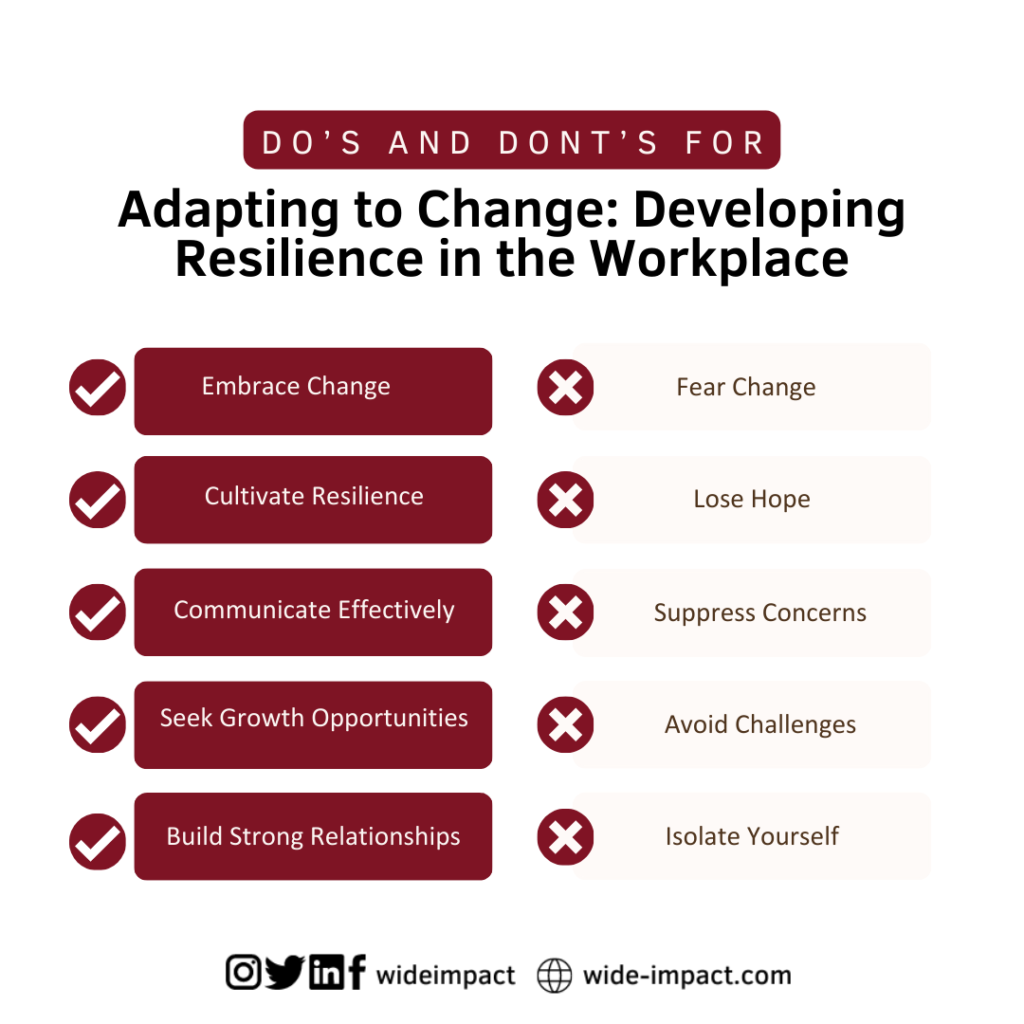By Dr. Salam Slim Saad
Change is the only constant in life, impacting both our personal and professional circles. individuals and organizations capable of adeptly navigating these transformations tend to thrive. from technological advancements and shifts in market trends to personal life events. The ability to adapt is a vital skill that empowers individuals and organizations not only to survive but also to excel in the face of uncertainty.
The importance of resilience (flexibility) in the workplace cannot be overstated. It is not just about weathering storms; it is about succeeding among the constant winds of change. Resilience allows individuals to adapt their mindset and approach when faced with challenges or unexpected circumstances. It enables them to bounce back from setbacks, learn from failures, and find new opportunities for growth.
Moreover, resilient employees are better equipped to handle stress and uncertainty effectively. They can maintain a positive attitude even during difficult times, inspiring those around them with their firm determination and optimism.
Organizations that prioritize resilience within their workforce benefit in multiple ways. Resilient employees are more likely to stay motivated and engaged despite ongoing changes or disruptions. They bring an innovative perspective to problem-solving and readily embrace new ideas that drive productivity and success.
By fostering a culture of resilience, companies create an environment where individuals feel supported through difficulties rather than overwhelmed by them. This ultimately leads to higher employee satisfaction levels, increased retention rates, and improved overall performance.
The Power of Adaptation in Business: Real-World Examples
Adaptation is a must in the corporate world. Those who fail to adapt may find themselves falling behind, while those who embrace change and innovation can secure their future success. Adaptation is not merely a survival strategy; it’s a path towards thriving and excelling in an ever-changing world of business and technology. As we’ve seen with Nokia’s lost chance, disastrous outcomes may result from a lack of adaptability. On the other hand, as shown by Amazon, IBM, and Netflix, a corporation may achieve success by adaptability. Here we’ll look at several real-life examples that show how important adaptability is for businesses.
Nokia’s Missed Opportunity
Nokia, once a global mobile phone giant, shows what happens when people resist change. In the early 2000s, Nokia was unmatched. However, they failed to foresee the ascent of smartphones and the revolutionary touch-screen technology. Even though they had the ability to innovate, Nokia stuck with its old mobile phone designs for a long time, which caused their market share to drop significantly.
Netflix’s Transformation
In contrast, Netflix presents a remarkable story of adaptation and transformation. Initially, Netflix operated as a DVD rental service. Their quick shift towards internet streaming, original content production, and trouble of the existing cable TV sector was a response to the changing media consumption environment. Netflix became an international entertainment giant by adopting the digital age and responding to consumer tastes.
IBM’s Reinvention
Despite being one of the oldest technological businesses in the world, IBM had a rough go of it in the latter part of the twentieth century. Their major business was seriously jeopardized by the shift from mainframe computers to personal computers. The fact that IBM was able to turn into a consulting and solutions business shows how flexible the corporation is. Because of this shift in strategy, IBM was able to prosper in the information era.
Amazon’s Innovation Culture
The significance of constant innovation was immediately obvious to Jeff Bezos, Amazon’s founder. As part of Amazon’s business culture, Bezos promoted an atmosphere that valued trying new things and taking calculated risks. So, in response to the e-commerce boom, Amazon moved into other industries, such as smart gadgets (Amazon Echo), cloud computing (Amazon Web Services), and more. They have become market leaders in several sectors thanks to their relentless efforts at innovation and adaptation.
Promoting Workplace Resilience
Establishing a workplace environment that nurtures resilience is crucial for the well-being of employees. When workers feel supported, valued, and genuinely cared for, they are better equipped to navigate and adapt to the challenges of change. To foster this kind of resilience, consider implementing the following strategies within your organization:

- Open Communication: Encourage a workplace culture characterized by open and transparent communication. This means fostering an environment where all team members, regardless of their position, feel comfortable sharing their thoughts, concerns, and ideas. An atmosphere of open communication allows for the free exchange of information and promotes collaboration. For instance, encouraging employees to express their feedback about a new project or policy can lead to valuable insights and improved decision-making.
- Empathy and Understanding: Cultivating empathy within the workplace is vital. Encourage colleagues to actively listen to one another’s perspectives. This practice promotes a better understanding of the challenges each team member faces and can lead to more effective collaboration. Imagine. Colleagues offering empathy and support, to a team member going through a difficult time, can greatly ease stress and improve overall resilience.
- Acknowledge and Appreciate: Regularly recognizing and appreciating employee efforts and achievements is essential. Celebrating milestones, both big and small, as a team fosters a sense of belonging and motivation. When employees feel their contributions are valued, they are more likely to remain resilient in the face of setbacks.
- Flexibility: Providing flexibility in work arrangements, such as flexible schedules or remote work options when feasible, can significantly contribute to employees’ work-life balance. A balanced work-life equilibrium is crucial for overall well-being and resilience.
- Team-Building Activities: Organize team-building activities outside of the regular office setting. These activities allow colleagues to connect on a personal level, fostering stronger bonds and a sense of camaraderie.
- Growth Mindset: When you adopt a growth mindset, you become more open to change and commit to continuous learning and improvement. If you face a challenging project, maintaining a growth mindset can lead you to see it as an opportunity to learn and grow, rather than a daunting task.
- Industry Trends: It is crucial for you to stay updated on industry trends and rising technologies. This approach allows you and your organization to anticipate changes and make well-informed preparations to stay ahead.
- Innovative Culture: Empower yourself and your colleagues to contribute your ideas and solutions. Encouraging your team to brainstorm and experiment with new features or products can lead to innovative solutions that set your organization apart from competitors.
- Agile Practices: Agile practices promote flexibility, collaboration, and iterative problem-solving, making your organization more adaptive and responsive. Imagine you work in project management. Implementing Agile techniques, such as regular team meetings and quick feedback, can enhance your project’s adaptability and efficiency.
- Develop Resilience: Resilience is the ability to bounce back from setbacks, and it’s a quality both you and your organization should cultivate. Containing challenges as opportunities for growth and remaining adaptable in the face of adversity are key to building resilience.
- Network and Collaborate: Strengthen your professional network by connecting with peers, mentors, and industry experts. Collaborative networking provides valuable insights and support, helping you adapt and succeed through shared knowledge and experiences. Suppose you are a young entrepreneur. Building strong relationships with mentors and fellow entrepreneurs can offer you valuable guidance and resources to navigate the challenges of starting a new business.
- Invest in Learning and Development: Support yourself and your employees by offering training and development opportunities that enhance your skills and knowledge. Equipping individuals and teams with the right tools for continuous growth enables you to tackle new challenges effectively. Suppose you are a manager. Encouraging your team members to participate in workshops or online courses can help them acquire new skills, making your team more resilient and adaptable in a dynamic business environment.
Change is unavoidable in the workplace and it can often be difficult to adapt. However, by developing resilience, we are able to bounce back from challenges and use them as opportunities for growth. Through the tips mentioned above, we not only improve our performance in the workplace, but also enhance our overall well-being. Let us remember that change is constant and by developing resilience skills, we can cross through any challenges that come our way with confidence and success. Remember that building resilience takes time and effort but the benefits of being able to adapt to change are well worth it. So let us welcome change with open arms and continue growing both personally and professionally through resilience.


